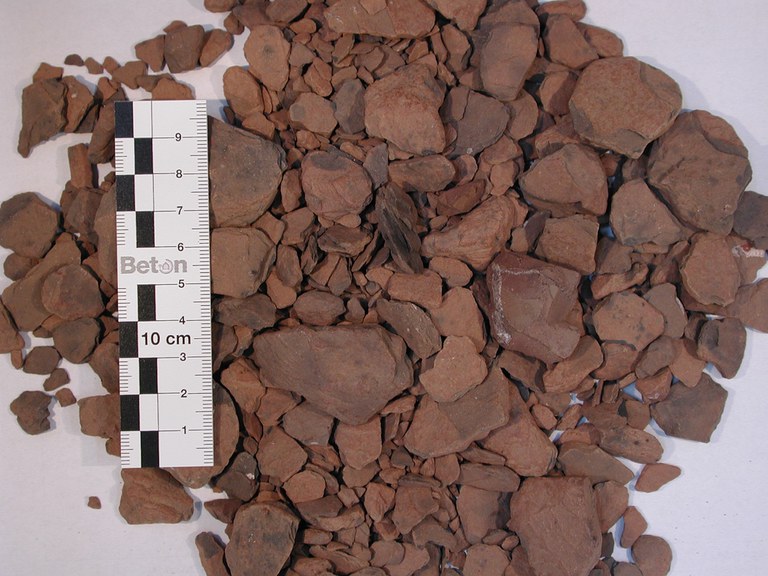The Romans already appreciated them
Calcined clays are a very interesting group of pozzolans that are available worldwide. They are an efficient and promising alternative and supplement to conventional mineral binders. At the Institute for Construction Materials, large-scale calcined clays are investigated, which were produced from naturally occurring clay mixtures. Due to the low lime content in the raw clay, only little CO2 is released during calcination. Therefore, these calcined clays can be classified as sustainable and environmentally friendly.

Figure: Calcined clay particles
Use in cementary systems
In cementary systems, calcined clay is used either as a main component of composite cements or as a supplementary cementitious material. Within the framework of various research projects, the following questions are being addressed:
- Influence of firing temperature on pozzolane reactivity
- Effectiveness in the cementary system and influence on cement hydration
- Influence on fresh and solid concrete properties and durability properties
- Possible applications for special concretes
- Interaction of structurally different superplasticizers with calcined clays
Use in hydrothermally hardening systems
Hydrothermal hardening in autoclaves is used for the production of calcium silicate masonry units and autoclaved aerated concrete. In both cases calcined clay can replace some of the usual mineral binders (lime, cement, gypsum). This measure improves the ecology. At the same time, the calcined clay has a positive effect on the resulting mineral phases and influences various mechanical properties and durability.
Within the framework of various research projects, the following questions are being addressed
- Use of calcined clays as a binder component to improve the CO2 balance calcium silicate masonry units
- Possibilities of a sulphate carrier and cement-free formulation to improve the recyclability, environmental compatibility and CO2 balance of autoclaved aerated concrete